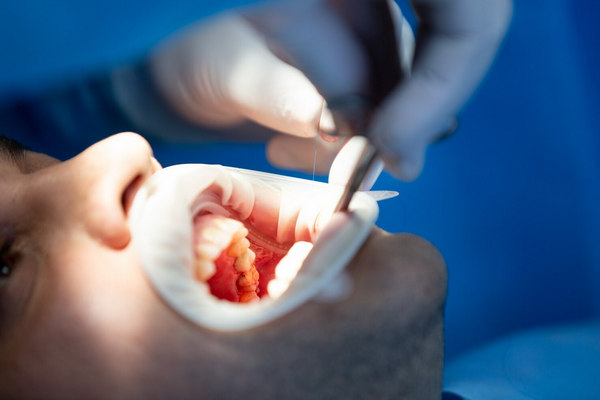You’re enjoying your favorite meal when suddenly you feel a click, a sharp twinge, or simply that frustrating sensation that chewing takes more effort than it used to.
If chewing or biting has become part of your daily struggle, here’s something important you should know: it’s not normal—your teeth are sending you a clear message.
Eating without pain is a simple pleasure that reflects a good quality of life. As a dentist, I often see how difficulty chewing food doesn’t just keep you from eating harder textures—it can also affect your nutrition.
That’s why today I want to share the possible causes behind difficulty chewing or biting, and most importantly, how we can help you fix it!
🦷 The 6 Most Common Causes of Difficulty Chewing or Eating
Behind teeth that hurt when in contact with food, there’s usually one or more of the following causes. Remember, every pain is a sign you shouldn’t ignore:
🦷 Deep Cavities
When a cavity progresses too far and reaches the dental pulp (where the nerve lives), the tooth becomes extremely sensitive. When you chew, pressure travels directly to that irritated area, causing sharp, intense pain. The message is clear: your tooth needs a root canal or, in milder cases, a deep restoration before the infection spreads.
🦷 Old or Damaged Fillings
Fillings and restorations aren’t meant to last forever. Over time and with daily habits, they can crack, wear down, or slightly detach from the tooth. When that happens, bacteria can seep in—or worse, pressure from chewing can irritate the exposed dentin underneath. A failing filling is like a broken seal that needs to be replaced immediately to protect the tooth’s inner structure and preserve its function.
🦷 Cracked or Chipped Teeth
Biting something too hard, suffering trauma, or even chronic grinding (bruxism) can create cracks and microfractures in your teeth. Sometimes these cracks are almost invisible, but when pressure is applied, the chipped area moves slightly—triggering pain from contact with the pulp. This problem needs prompt evaluation and is often treated with a dental crown or bonding.
🦷 Advanced Periodontal Disease
Sometimes the issue isn’t in the hard structure of the tooth, but in the soft tissues around it: the gums and supporting bone. If the foundation is unstable due to bone loss, any pressure when biting can cause discomfort, sensitivity, or a dull, diffuse pain. In some cases, the teeth may even begin to loosen, so a prompt visit to the dentist is essential.
🦷 Bruxism
If you clench or grind your teeth unconsciously—especially at night—you’re putting excessive strain on your entire chewing system. This overloading not only wears down the enamel and fractures restorations but also inflames the ligaments around the roots, making teeth hypersensitive to normal bite pressure. Your mouth is telling you that you need a night guard or another way to relax those muscles.
🦷 Temporomandibular Joint (TMJ) Problems
Sometimes, the pain you feel when biting doesn’t come from the tooth itself but from the joint connecting your jaw to your skull. If it’s inflamed, tense, or misaligned, chewing causes discomfort or pain in the jaw, ear, temple, or head. This is a muscular and joint issue that requires an integrated approach.
⚡ The Domino Effect: Why You Shouldn’t Ignore Chewing Difficulties
Many people adapt by chewing only on the side that doesn’t hurt or avoiding foods that cause discomfort. However, ignoring chewing pain creates a “domino effect” that can lead to several problems:
- Asymmetric wear: Chewing only on one side overworks that area, which can worsen or even trigger bruxism and potentially lead to TMJ issues in the future.
- Digestive problems: Chewing poorly affects more than your teeth—digestion starts in the mouth. Swallowing larger chunks of food forces your stomach to work harder, leading to bloating, reflux, or heaviness after eating.
- Poor nutrition: Over time, you may unconsciously start avoiding fruits, vegetables, or meats that require effort to chew, limiting your diet without realizing it—simply to avoid pain.
✨ Regain the Pleasure of Eating Without Fear
The good news is that most causes of chewing difficulty have predictable and effective treatments. In our clinic, our main goal is to restore your chewing function so you can once again enjoy food—and life—without discomfort.
🦷 Dental Restoration
When the issue is decay, a failing filling, or a minor fracture that hasn’t reached the nerve, we focus on rebuilding the tooth through techniques such as:
- Composite resin fillings. Ideal for surface cavities or minor cracks. We replace the damaged material or old resin to seal the tooth and prevent pressure sensitivity.
- Inlays and Onlays. When the damage is too extensive for a simple filling but not enough for a full crown, custom inlays/onlays offer a durable, precise solution that restores the tooth’s original shape.
- Dental crowns. These fully cover and protect a tooth severely damaged by decay, large fractures, or after a root canal—restoring its original strength to handle bite pressure.
🔧 Root Canal Treatment
If a deep cavity or fracture reaches the center of the tooth (the pulp), causing intense pain when biting, a root canal is typically the best solution. This essential procedure allows us to:
- Remove the infected nerve tissue and stop the pain.
- Seal the root canal to protect the tooth from reinfection.
- Preserve your natural tooth, later covering it with a crown so you can chew confidently again.
🦷 Dental Implants and Bridges
In some cases, chewing difficulties come from missing teeth, which disrupts bite balance and causes neighboring teeth to shift. To restore chewing strength, we offer two main options:
- Dental implants. The best way to replace a missing tooth. An implant acts as an artificial root supporting a crown—restoring both function and bone stimulation for a strong, stable bite.
- Dental bridges. A fixed or removable alternative that uses adjacent teeth for support, filling the empty space and restoring bite continuity.
🌟 Smile Design
“Smile design” goes beyond aesthetics—in modern dentistry, it’s about harmonizing function and beauty. This process may include:
- Occlusal adjustments. Small, precise reshaping of tooth surfaces to eliminate excessive pressure points causing discomfort.
- Orthodontics (braces or aligners). For some patients, a misaligned bite can cause pain or chewing difficulty. Orthodontic treatment effectively repositions teeth, distributing chewing forces evenly.
🦷 Other Treatments
For chronic bruxism and TMJ disorders, treatment focuses on relaxation and protection:
- Custom night guards. A vital tool to reduce discomfort from grinding. These devices are worn during sleep, absorbing bite force and protecting teeth from wear.
- Complementary therapies. In some cases, we recommend jaw physiotherapy or muscle relaxants (for severe tension) to ease strain in the facial and joint muscles that interfere with chewing.
💙 Enjoying Food Means Enjoying Life
Your mouth was designed to nourish you and bring you joy through food. If it’s failing you, it’s time to listen to it.
At Shtern Dental Clinic, we want you to enjoy every bite without worry or pain.
If you’re struggling to chew, don’t wait for it to worsen. Schedule your appointment with us—we’ll carefully assess your case and restore the confidence and strength your smile deserves.
















